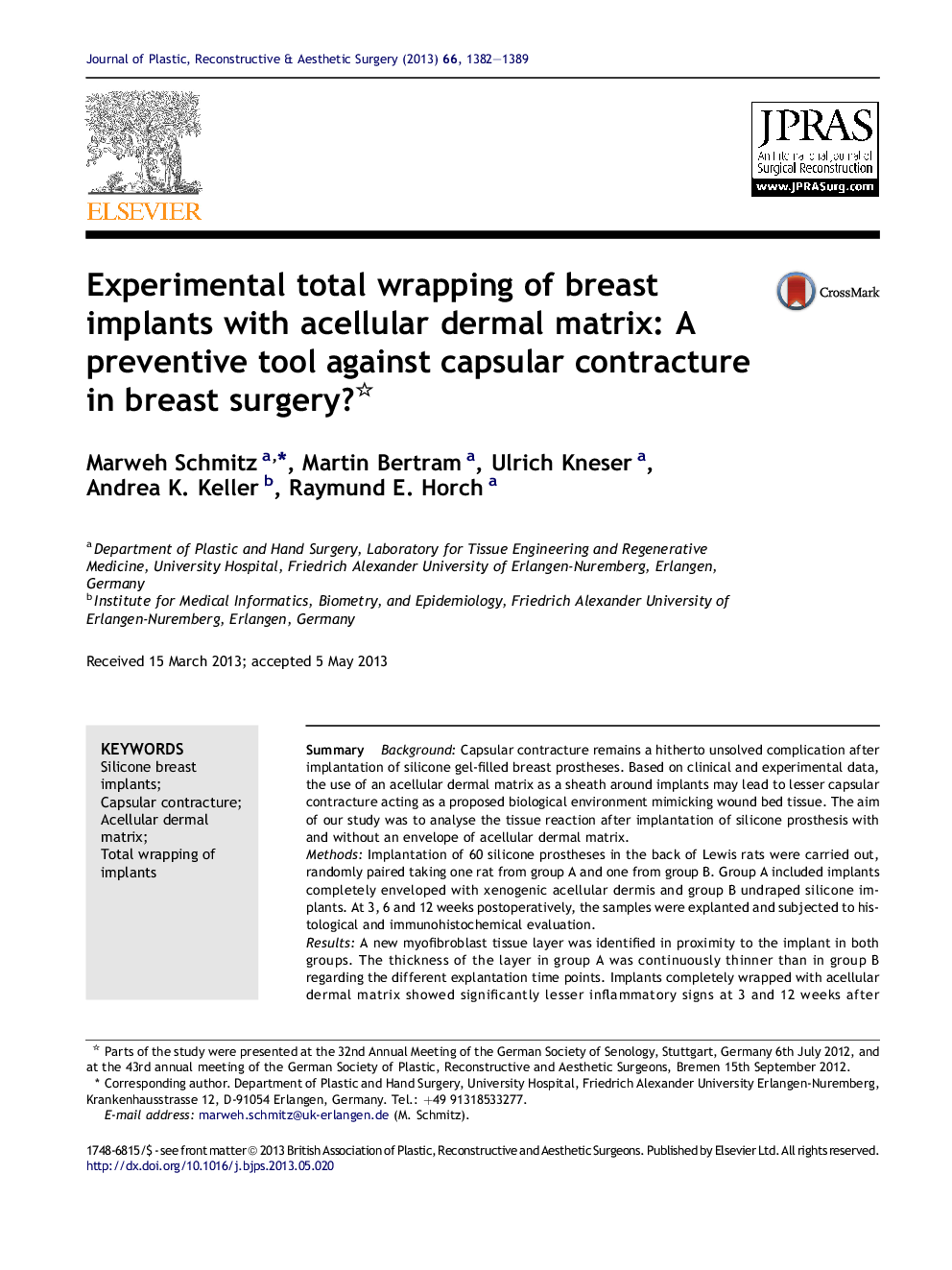| Article ID | Journal | Published Year | Pages | File Type |
|---|---|---|---|---|
| 4118719 | Journal of Plastic, Reconstructive & Aesthetic Surgery | 2013 | 8 Pages |
SummaryBackgroundCapsular contracture remains a hitherto unsolved complication after implantation of silicone gel-filled breast prostheses. Based on clinical and experimental data, the use of an acellular dermal matrix as a sheath around implants may lead to lesser capsular contracture acting as a proposed biological environment mimicking wound bed tissue. The aim of our study was to analyse the tissue reaction after implantation of silicone prosthesis with and without an envelope of acellular dermal matrix.MethodsImplantation of 60 silicone prostheses in the back of Lewis rats were carried out, randomly paired taking one rat from group A and one from group B. Group A included implants completely enveloped with xenogenic acellular dermis and group B undraped silicone implants. At 3, 6 and 12 weeks postoperatively, the samples were explanted and subjected to histological and immunohistochemical evaluation.ResultsA new myofibroblast tissue layer was identified in proximity to the implant in both groups. The thickness of the layer in group A was continuously thinner than in group B regarding the different explantation time points. Implants completely wrapped with acellular dermal matrix showed significantly lesser inflammatory signs at 3 and 12 weeks after implantation compared to controls. Cell proliferation after 12 weeks was significantly decreased in group A.ConclusionThe slight myofibroblast layer and reduced rate of inflammation and proliferation in the treatment group show a positive effect of total acellular dermal matrix envelope and hypothesise the decrease of capsular contracture in long-term periods.
